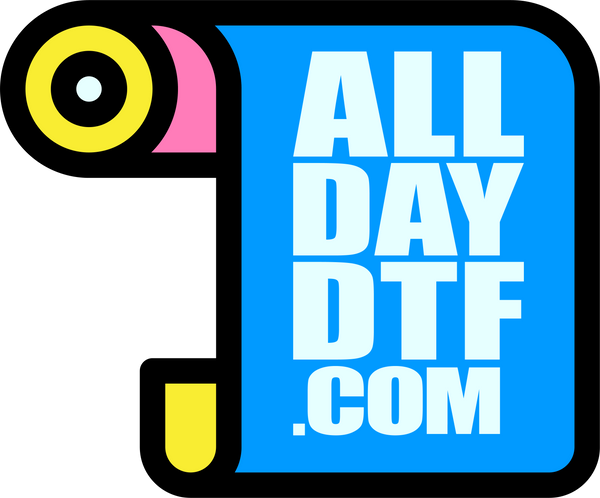
DTF vs. Screen Printing
Share
DTF (Direct-to-Film) printing and screen printing are two popular methods for customizing and printing designs on various surfaces, with a significant focus on textiles like T-shirts, hoodies, and other apparel. Each method has its own advantages and disadvantages, and the choice between DTF and screen printing depends on your specific needs and preferences. Let's compare DTF and screen printing in key aspects:
1. Print Quality and Detail:
-
DTF Printing: DTF printing offers high-resolution and detailed prints with vibrant colors. It excels in reproducing intricate designs and photographs with fine details. The print quality is often comparable to direct-to-garment (DTG) printing.
-
Screen Printing: Screen printing can produce vibrant, opaque colors, but it may have limitations when it comes to intricate details. The number of colors and the complexity of the design can affect the final result.
2. Color Options:
-
DTF Printing: DTF can accommodate a wide range of colors and intricate color gradients, making it suitable for colorful and detailed designs.
-
Screen Printing: Screen printing may be limited to a specific number of ink colors, and color gradients can be more challenging to achieve.
3. Print Quantity:
-
DTF Printing: DTF is well-suited for both small and large print runs. It's an efficient option for producing custom, one-off prints as well as bulk orders.
-
Screen Printing: Screen printing is often more cost-effective for large print runs but may not be as cost-efficient for small quantities due to setup costs.
4. Cost and Setup:
-
DTF Printing: DTF typically has lower setup costs compared to screen printing. This makes it more accessible for small businesses and individuals looking for custom apparel options.
-
Screen Printing: Screen printing involves higher setup costs due to the creation of screens for each color in the design. However, for large quantities, the cost per unit decreases, making it more economical.
5. Durability:
-
DTF Printing: DTF prints are known for their durability. They resist cracking, peeling, and fading, making them suitable for long-lasting designs.
-
Screen Printing: Screen prints are also durable, and the ink sits on top of the fabric, resulting in long-lasting prints.
6. Production Speed:
-
DTF Printing: DTF offers a quick turnaround, making it suitable for on-demand or last-minute orders. The process is relatively fast and requires minimal setup time.
-
Screen Printing: Screen printing can have a longer turnaround time due to the screen setup process. It may not be as ideal for urgent orders.
7. Design Complexity:
-
DTF Printing: DTF can handle complex and highly detailed designs, including photographs and full-color images.
-
Screen Printing: Screen printing is better suited for simple and bold designs with solid colors.
8. Environmental Impact:
-
DTF Printing: DTF is considered more eco-friendly than traditional screen printing as it uses fewer chemicals and water.
-
Screen Printing: Traditional screen printing can involve the use of more chemicals and water, potentially having a larger environmental footprint.
In conclusion, the choice between DTF and screen printing depends on your specific needs and priorities. DTF printing is ideal for those seeking high-quality, detailed prints in smaller quantities with a quick turnaround time. Screen printing is a cost-effective option for larger quantities of simple designs and is known for its durability. Consider your budget, the complexity of your design, and the quantity of prints you require when making your decision.
